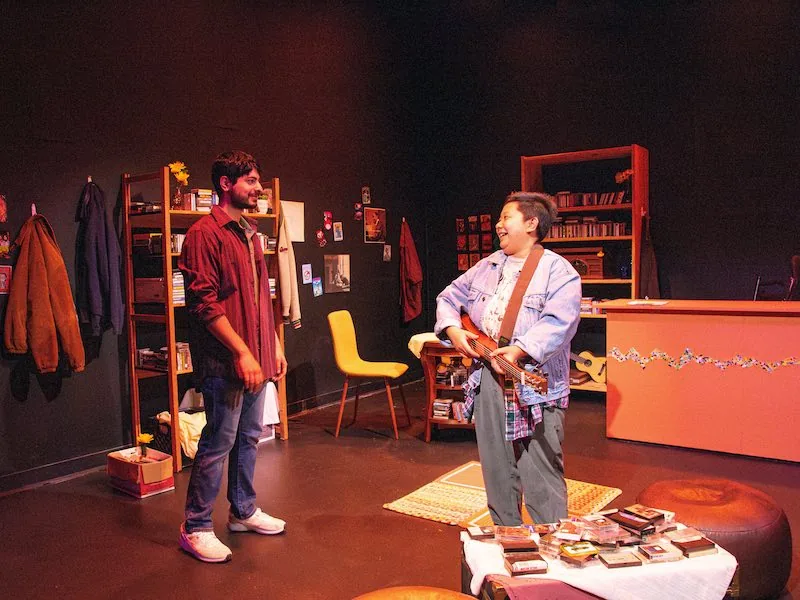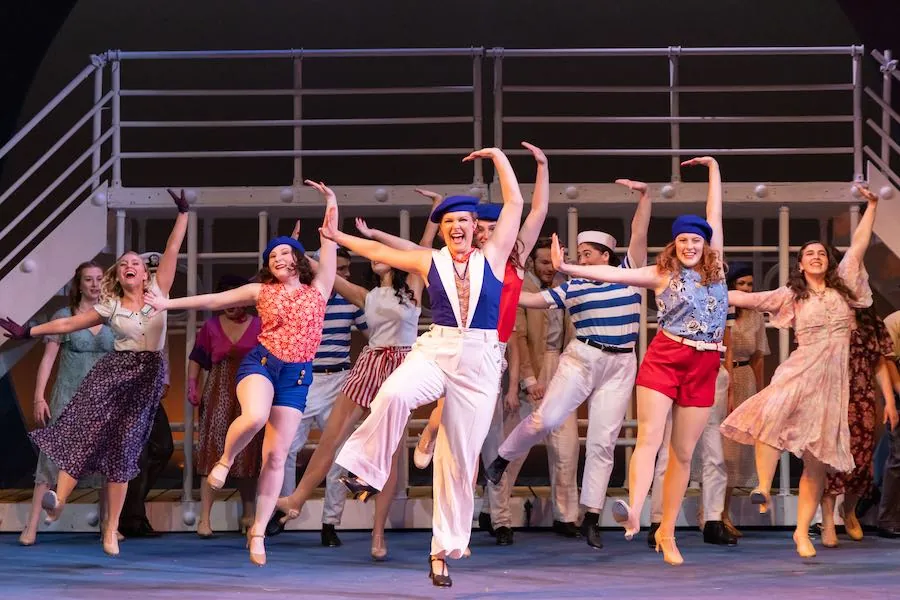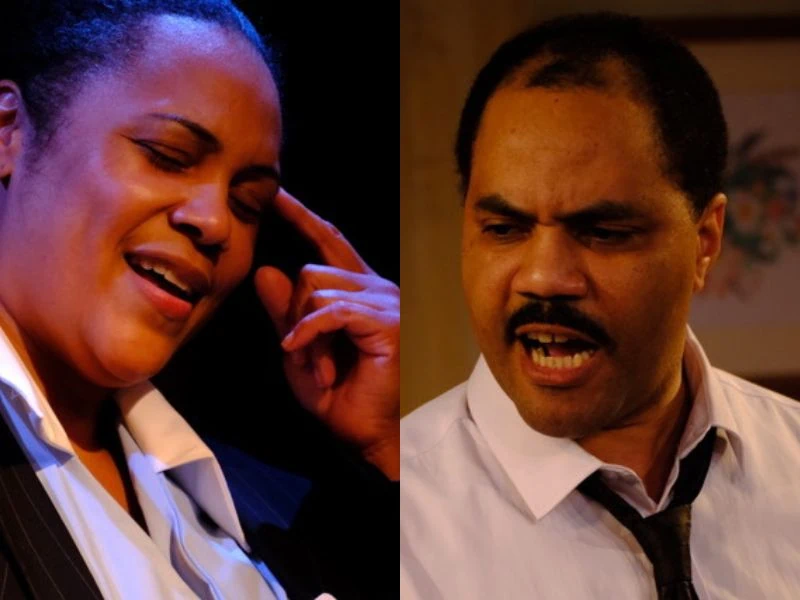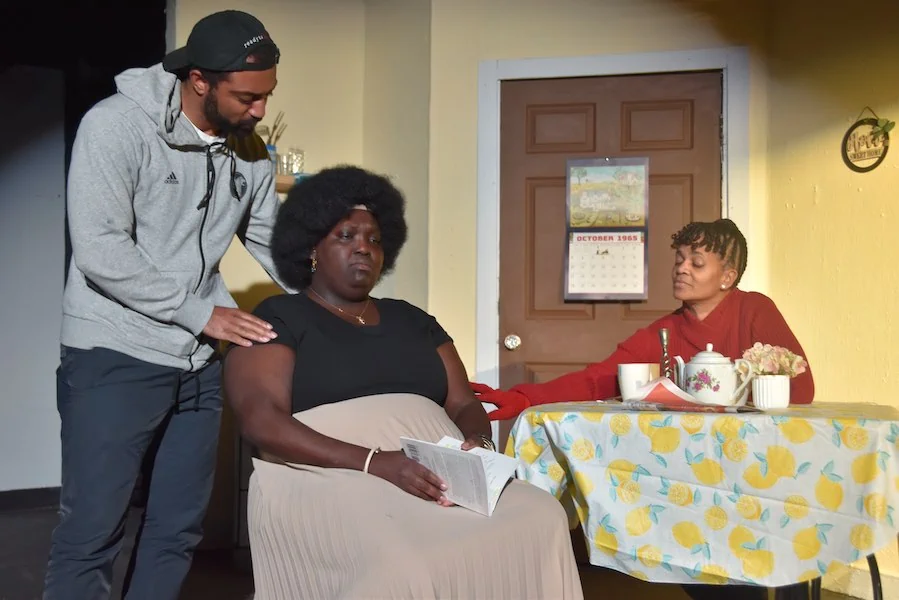By Jakob Cansler
This article was originally published in DC Theater Arts, here.
To note that Pride and Prejudice is well-known is perhaps a truism, so obviously accurate that it need not be said. Jane Austen’s 1813 novel is a classic for a reason — its deceptively simple story has aged well, or maybe even not aged at all. Today, it is so oft-referenced that non-readers will recognize at least the main characters.
Still, obvious as it may be, the fame of Pride and Prejudice is important to remember for a theater company staging an adaptation of it. After all, it means that theater-goers will have an idea of what this show is, an expectation for their theater-going experience.
That can be both a gift and a curse. Expectations create a million different options for bringing a story to life, ranging from staying true to the original source material to straying far away from it. No option is wrong, but all come with their own challenges.
In the case of Silver Spring Stage’s production of Pride and Prejudice, now in performances through May 14, the former option has been chosen. In a production faithful to its source, the community theater company has brought Austen’s classic to life and, for the most part, overcomes the challenges associated with doing so.
It should be noted, too, that this production also overcame several challenges unrelated to the source material. Just two weeks into rehearsal, a global pandemic delayed the show. Three years later, with much of the same cast and crew finally ready to complete the process, unexpected construction at Silver Spring Stage’s home theater forced the company to stage the production at The Writer’s Center in Bethesda, a city that is notably not Silver Spring.
Now, as directed by Madeleine Smith, Austen’s story has finally made it to the stage. At the center of that story is Elizabeth Bennet (Katherine Leiden), the second-eldest of five daughters in the Bennet family. Mrs. Bennet (Andrea Spitz) is desperate, for inheritance purposes, to marry off at least one of her daughters to a wealthy man.
The main prospect for the eldest, Jane (Stephanie Dorius), is Mr. Bingley (Judah Hoobler), a bachelor who has just moved to town with his best friend, Mr. Darcy (Nicholas Temple). Jane and Mr. Bingley immediately like each other. Elizabeth and Mr. Darcy immediately hate each other. Everyone around them is immediately intrigued.
This specific adaptation, by Christina Calvit, stays true to all the essential plot points of the original novel and pulls much of the dialogue from Austen’s work. Where Calvit does stray is in how the plot is conveyed. Most importantly, Elizabeth serves as a narrator, speaking directly to the audience to reveal important information and confide her feelings. Townspeople, as well, gossip about the relationships forming and unforming.
Smith, for her part, has made the specific decision to keep this production true to the cultural context of the era — that is, the Regency era in the early 19th century — in which the story takes place.
Aesthetically, detailed attention has been given to the scenic design (by Brigid Kelly Burge), hair and makeup designs (Maureen Roult), and costumes — for which the team of Nathaniel Cavin, Nora Galil, and James Carey created over 50 individual garments. So too do the mannerisms, accents, music, and dancing (choreography by Stefan Sittig) fit the Regency era.
The choice for historical authenticity makes Silver Spring Stage’s Pride and Prejudice as close to a true period piece as is possible for a community theater company. Of course, period pieces come with obstacles — most notably the linguistic and cultural disconnect that can make a work less engaging for modern audiences.
Those obstacles can be overcome, though, and there are many instances in this production in which they are. Some sections of the script purposefully move the story along quickly, and Smith’s staging emphasizes snappy transitions, sometimes even overlapping scenes. During those sections, the pace keeps the show engaging. Some of the actors — in particular Leiden as Elizabeth and Spitz as Mrs. Bennet — are also skilled in delivering old-fashioned dialogue with enough variation to keep it accessible.
There are, however, other parts of this production in which the obstacles of a period piece are not overcome, particularly in the second act. Sections that can’t utilize quick pacing struggle to stay compelling, in particular longer scenes in which the emotional tension gets bogged down in the language. In those cases, more dynamic staging and line delivery could give the tension the boost it needs.
Overall, though, theater-goers expecting a three-dimensionalized version of Austen’s classic novel will not be disappointed by Silver Spring Stage’s production. This is Pride and Prejudice, as it was written in 1813, brought to life.







